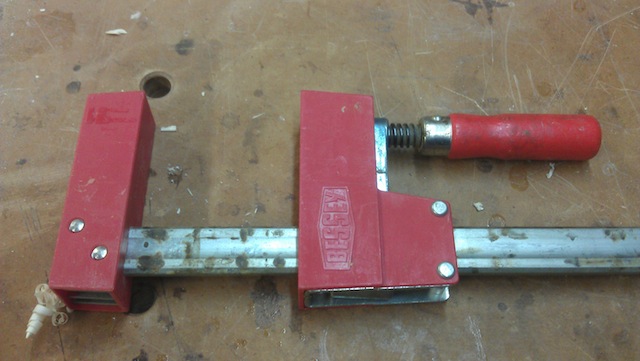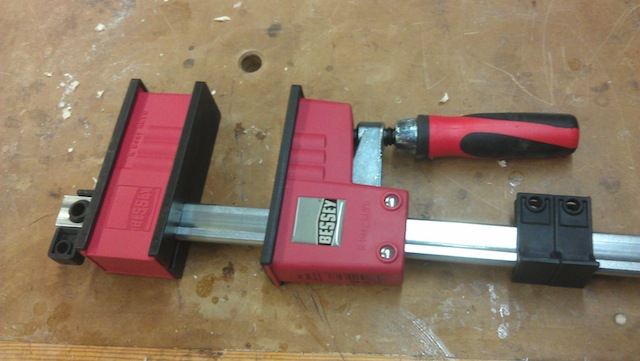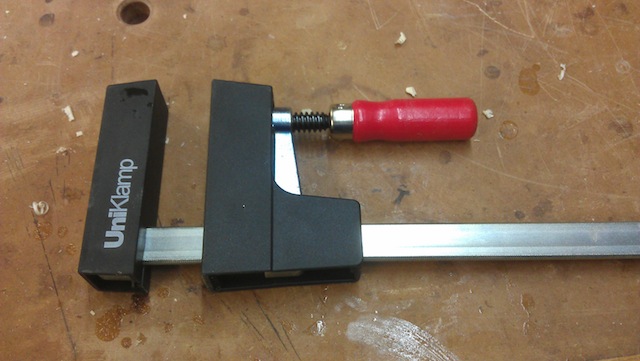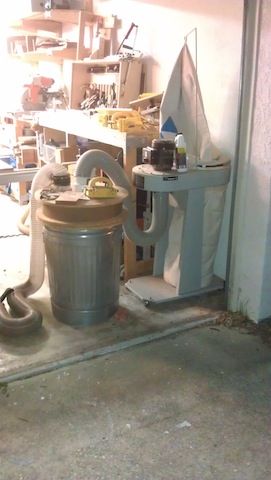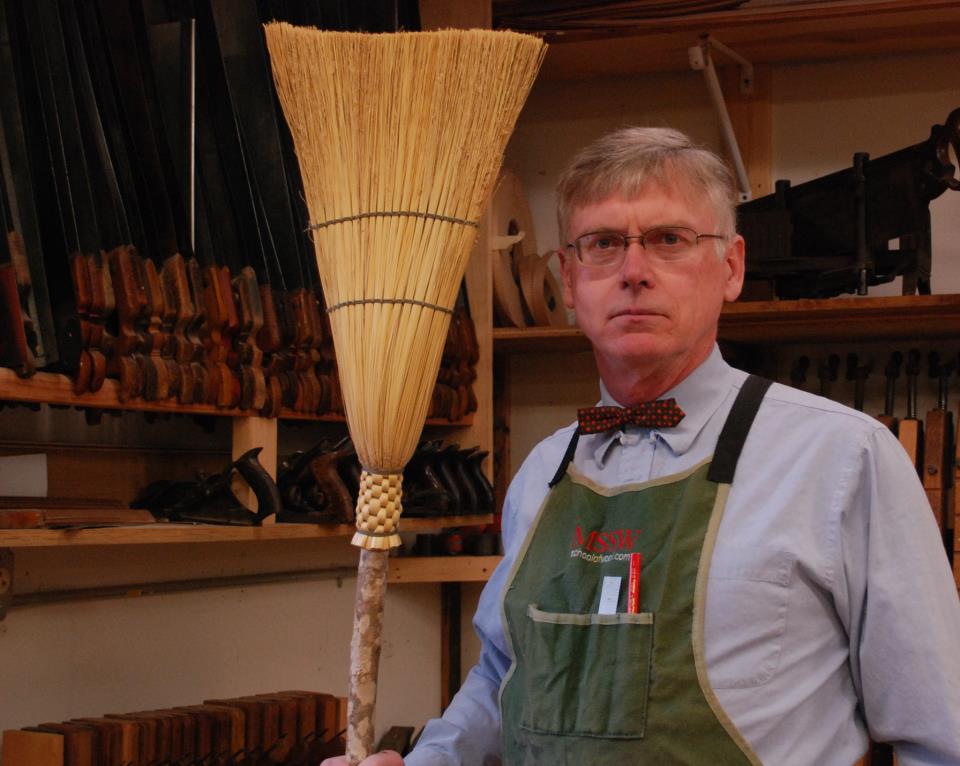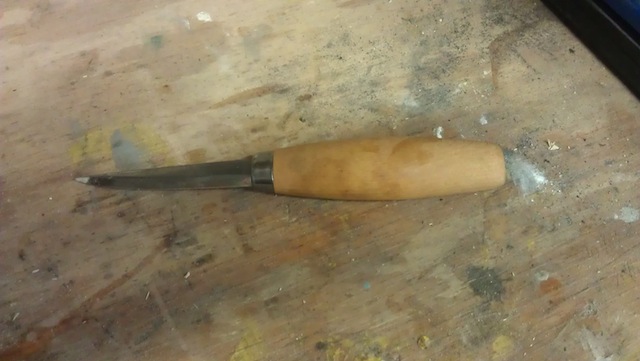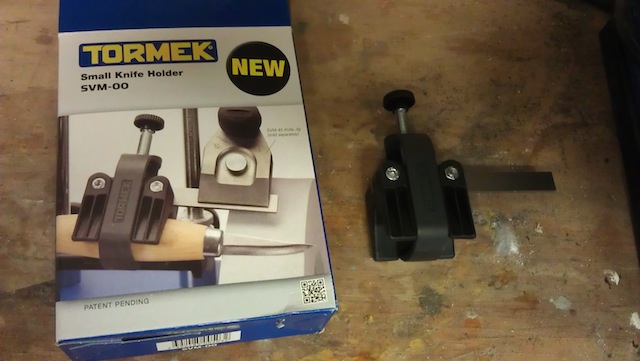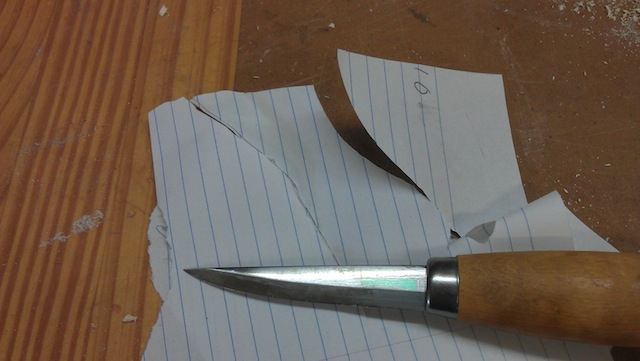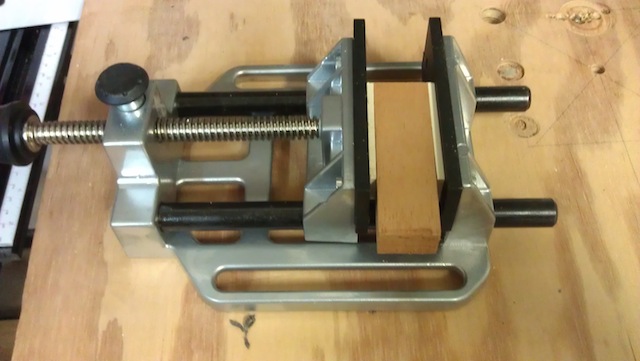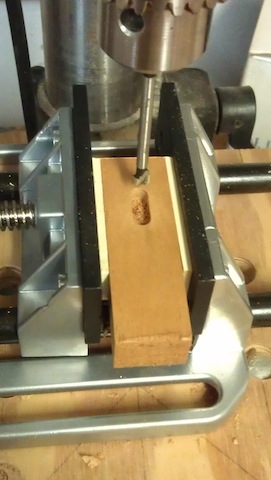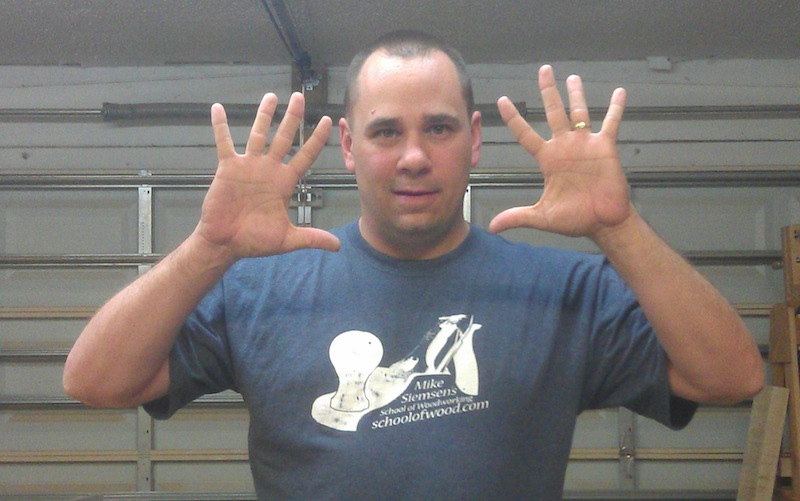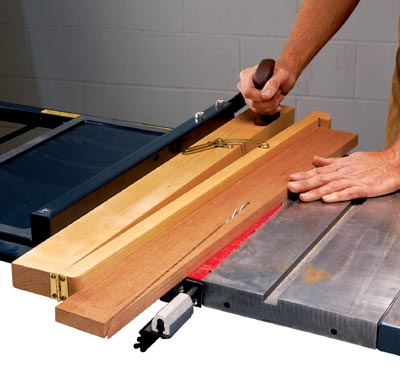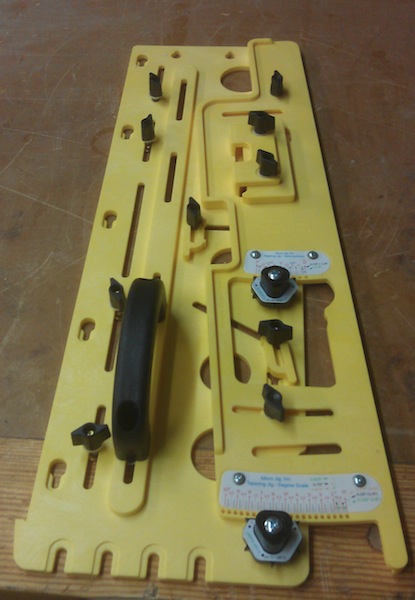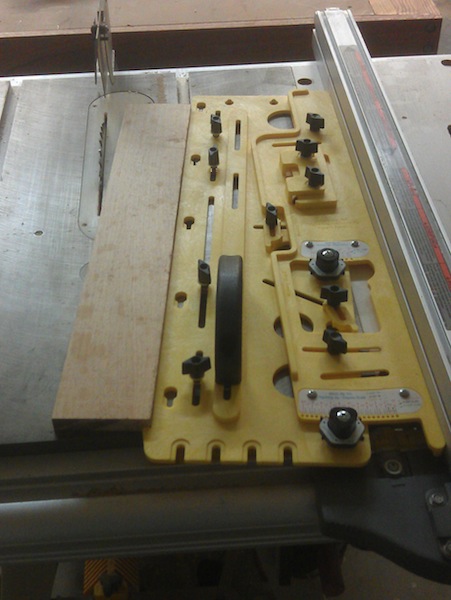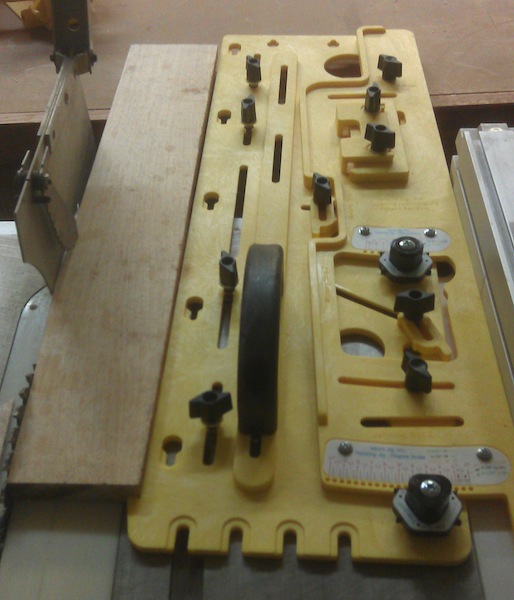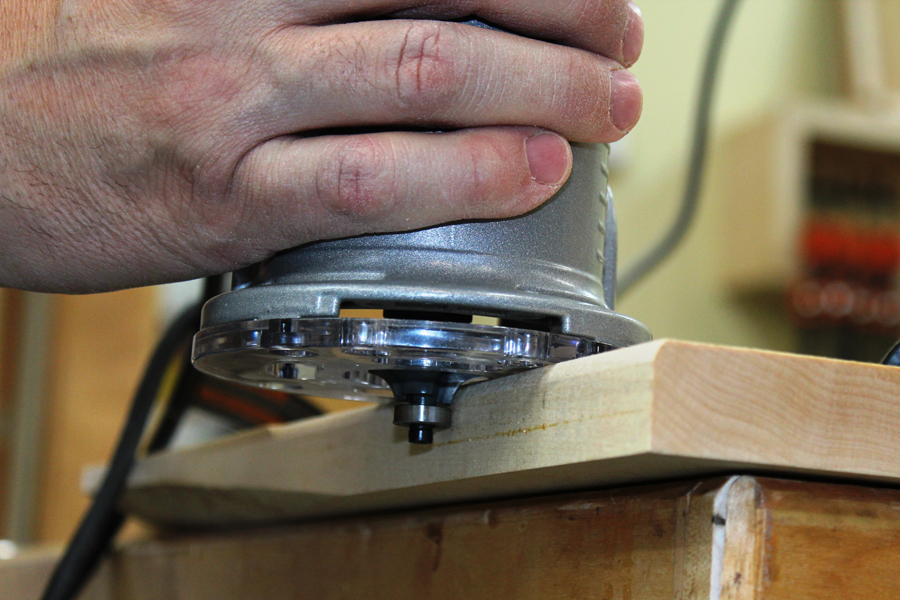I have got to tell you – I love clamps. More clamps equals nothing but goodness. The only problem is that when I started woodworking, all I could afford were the uber-cheap dollar store variety. Sure, they looked good, but the F-clamps would bow under even the slightest amount of pressure, and the heads of the aluminum channel clamps I was using tended to snap if I torqued down on them. A total bummer.
I did manage to limp along with this arrangement for several years.. until I had my first experience with some really high-quality clamps made by Bessey Tools.
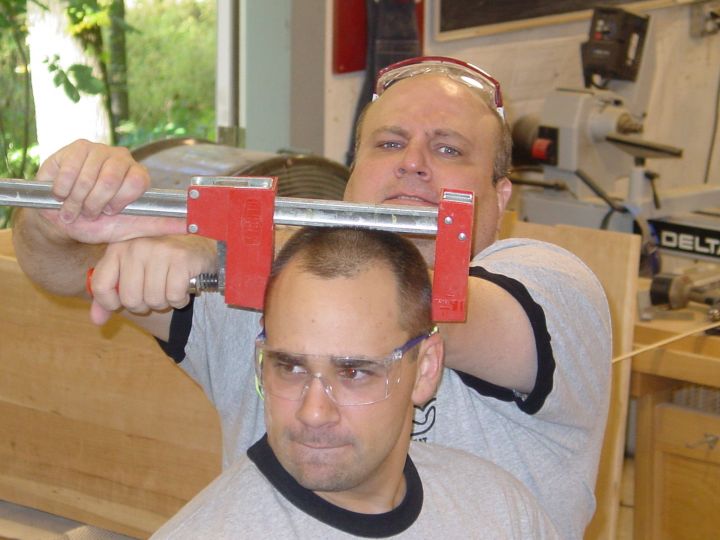
Yes, I like to wear my clamps on my head. Why do you judge? All joking aside, the clamp in the picture is an original Bessey K-Body clamp, and once I had a chance to use one at a woodworking school I attended, well, my heart skipped a beat and my palms started to sweat. Yes, I realize that a clamp may be a clamp, but these babies were something special. Beefy. Sturdy. Useful. I had to get my hands on some of them, and I went through a period where every dime I could scrape together went toward buying some for my collection.
These are my workhorses. I love the heck out of them – I have for nearly eight years now. But, I only had eight of them, so for my glue ups, I would either have to spend a lot more time to do my glue ups, or risk using the crappy clamps (which have slipped on me many times, knocking my glue ups out of alignment) to get a good product.
Initially, I just asked the folks at Bessey to give me some advice. They have been great friends of the blog for years – donating items to give away as prizes for Get Woodworking Week and my thousandth post (was that last summer already?). Well, once they got my request, the folks over there were over the top with their generosity, sending me a selection to help round out my collection.
One of the first ones I was eager to try out were the new K-Body Revos. And, here I was thinking that the originals were awesome… These were a big improvement. The handles now have a rubber grip built in to them, making putting on the clamping pressure a whole lot easier. The jaws are larger, and the action to lock the lower head in place seems a lot more robust. These were definitely a plus.
They also sent me a few of their K-Body Revos with both the top and bottom jaws adjustable – called the Vario. The fun thing about these clamps is you can center your workpiece on the clamp bar and bring both jaws in to the work – preventing the massive tilt issue that you sometimes get with narrower workpieces and long clamps. These are deluxe for sure.
They also sent me some REVO Juniors. Basically, you get all of the features of the larger clamps in a smaller package. Since I normally used my original K-Bodies on the bottom and threw the junky clamps on top, these are perfect replacements for those older ones.
And, when it comes to more delicate construction projects – like my 2 x 4 treasure chest – they even included a set of their UniKlamps. They have the parallel jaw technology in a very lightweight clamp, making them an option for smaller jobs.
Thank you very much for these clamps, and I look forward to putting them to good use in my shop. In fact, I have a few projects I want to get started on soon that may require quite a number of glue ups….

